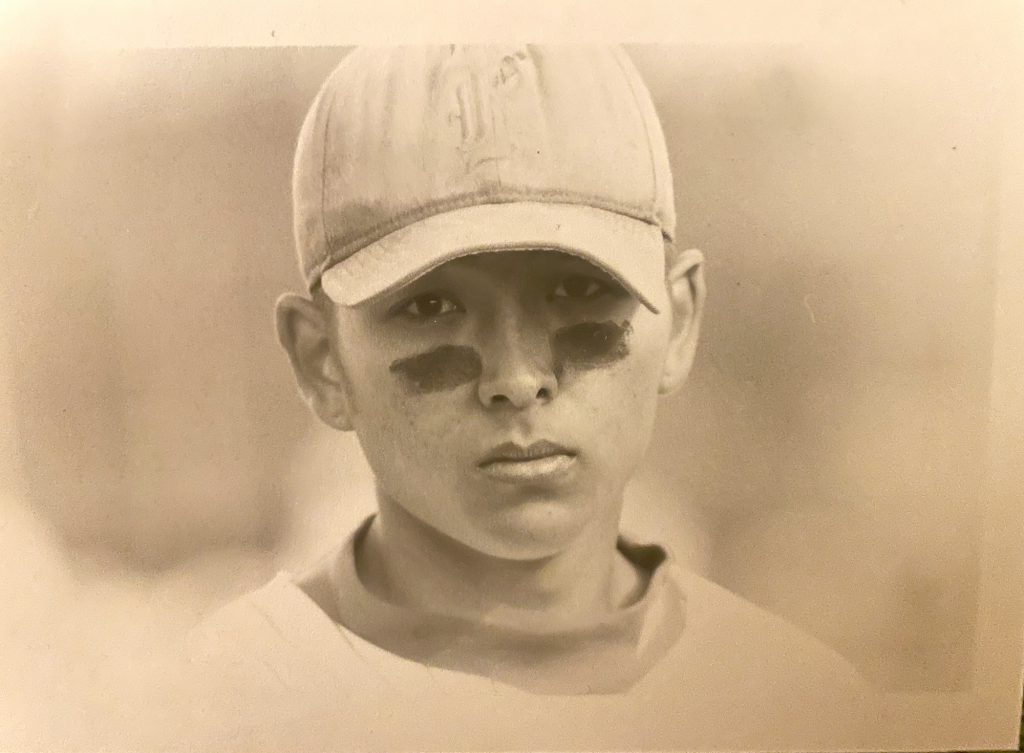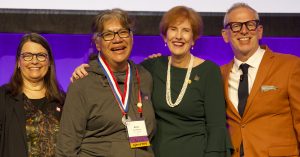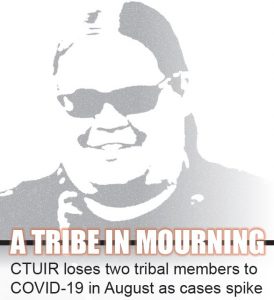Hard throwing Justin Quaempts reached incredible heights in his baseball career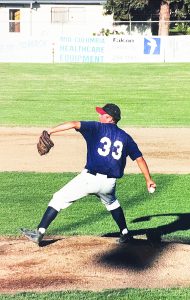
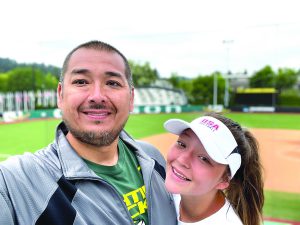
By Brandon Hansen for the CUJ
Justin Quaempts has travelled more than most, played baseball at a higher level than many and battled through injuries during his athletic career that would have dismayed anyone else.
The Confederated Tribes of the Umatilla Indian Reservation’s tribal member pitched at the highest collegiate level possible, was offered several professional contracts and was one of the most sought after baseball recruits and prospects in the country.
“For me, anytime I get a chance to reflect on my athletic journey, I tell student-athletes to take care of their body and to find the balance necessary in life, family, school and sports,” Quaempts said.
Quaempts said he played baseball for nearly as far back as he can remember.
“Playing catch with my dad and being around the game with him is literally the first thing I can remember,” he said. “He taught me everything about the game.”
With the local community big on softball and baseball in the 1980s and 1990s, Quaempts would spend days on end honing his athletic skills growing up. He is considered one of the most dominant Little League players in Pendleton Little League history. He also placed third in Oregon’s State Hersey Track and Field games softball throw as a 9-year old, and then won the next two state softball throw championships, including a regional win.
As a 10-year-old he was the No. 1 national seed going into the National meet.
He would go on to play high school ball for Pendleton High School as a sophomore, where he played JV under Rick Shimmel, who came from Stanford and Portland State. After his sophomore year, he made the varsity summer travel team Hodgen Distributing designed for older players. It was on this team when Quaempts began to really develop into a fantastic pitching prospect.
“That is where things took off for me physically,” Quaempts said. “I started to grow, mature and throw the ball real hard. It became pretty evident that the arm was something to talk about.”
After a somewhat delayed start to his junior baseball season due to two knee surgeries because of football and basketball injuries, in his first official varsity start – he threw a two-hit shoutout vs Lewiston. From there, he quickly moved into the No. 1 spot of PHS’s pitching rotation and his performance began to turn heads.
“I made all-conference as a pitcher, we made the playoffs and had a good run end too early,” Quaempts said.
While an injury cut the postseason short for Quaempts at the end of his junior season, he went on dominant that summer for Hodgen Distributing. That fall of his senior year, he made the Baseball Factory BATS Pre-season All-American team as a pitcher and third baseman. This allowed him to go to their national showcase in Baltimore, Maryland. After the showcase, colleges began to offer him scholarships immediately. He also began to see interest from major Pac-10 colleges like UW, Oregon State and WSU.
With big expectations going into his senior season, a hot start turned into dual all-conference honors as a pitcher and hitter, and Quaempts had one of the better overall single seasons in PHS’s history for combined pitching and hitting stats: A .397 batting average, 4 home runs, 32 RBIs, 88 1/3 innings pitched and 91 strikeouts.
The team relied on his pitching too much throughout the season though and overwork ultimately caused dead arm leading to three weeks missed pitching. The D1 and All-American trajectory changed and Quaempts ending up going to Linn-Benton Community College on a full-ride.
Not deterred, he would then tear through the NWAC setting records as a freshman, making all-conference and leading the NWAC in ERA for starting pitchers with a 1.04 mark and striking out 61 batters. As Quaempts continued to get better, throw even harder and developed even better breaking pitches, pro scouts were all over him.
“They were intrigued at this hard-throwing kid nobody had ever really seen before,” Quaempts said. “I had never been exposed to high level scouts consistently until then.”
After his freshman year, the Texas Rangers drafted Quaempts in the 29th round of the MLB draft and offered him money to sign, which he turned down. He also made the NWAC All-Star game while both Oregon State and NC State offered full rides. He was also invited to pitch in the Cape Cod League for the Harwich Mariners that summer. This league typically features the best college prospects in the nation.
During the winter of his sophomore season, he was invited to the Perfect Game World Showcase in Florida and got impressive marks by the Perfect Game scouts who felt his talent warranted a rating of a 10, which is a first-to-second round MLB Draft grade. The scouts said with his warrior-like approach anything was possible for Quaempts.
Still, he wanted to finish things up with a big sophomore year of college as the scholarship offers kept piling up and Baseball America ranked him the 15th best JUCO prospect in America going into the season.
Once again, his season started out electric but like before he got used too much as the feature pitcher by the team and that began to tire him out with a Tuesday, Saturday, Tuesday pitching schedule. Because of this wear and tear, teams offered less money than expected but still offered to draft him. Both the Rangers and Seattle Mariners offered contracts.
Still dreaming of D1 and a big payday – the national power Oklahoma State baseball team – came calling with a full-ride to sign there for his junior year.
“Growing up in the 1980s, you got used to Oklahoma State playing in Omaha every year – they made it seven years in a row – and I saw this program on my recruiting trip with excitement from their fanbase and a chin up and chest out attitude,” Quaempts said. “It was pretty obvious it was a high-level program and dream school situation for me to attend and to try and win a national championship.”
While other schools – Clemson, Florida, UCLA, Virginia Tech and Texas, to name a few, pursued him, he ultimately went with Oklahoma State because of future World Series winning coach John Ferrell, who was the pitching coach.
However the coach that recruited him left two weeks before he showed up to campus for a major league job and Quaempts had to adjust to living in Oklahoma by himself on a large college campus.
“When you go to a campus of 25,000, you’re not used to that but I got acclimated and I fell into my groove after Christmas and was ready to go be that big time arm, All-American and early round draft pick at OSU like the coaches and scouts wanted,” Quaempts said.
However three days before the team’s first road trip, Quaempts blew out his arm during a scrimmage that required Tommy John surgery. While he was able to secure a redshirt year that season, Quaempts rushed back to pitch in less than 10 months.
“I was always trying to push through these injuries because I did not want to get the injury prone label from scouts,” Quaempts said. “You never know when you’ll get an opportunity like this as an Indian again, so you become resilient and keep your mouth shut about injuries.”
He ended up hurting his back in a weightlifting accident three months after Tommy John so he had to also recover from that for his redshirt junior season at Oklahoma State. When he finally did get on the mound, he had to deal with the aftereffects of dead arm and tendinitis from such a quick recovery.
“It was a big up or big down thing for me at Oklahoma State,” Quaempts said. “It’s tough because you’re trying to catch lightning in a bottle every outing. I could tell pitching that season on the first pitch warming up – if it really exploded out of my hand, then it was going to be a lights out night. If it didn’t explode out of my hand, it was not going to be a good night.”
Still staying positive through the whole process, Quaempts pitched 11 innings and struck out 12. His first D1 strikeout was future AL MVP Dustin Pedroia.
During his redshirt senior season, Quaempts transferred mid-year to New Mexico State which offered him another full-ride scholarship with the thoughts of being a front line starter.
“It was a great experience at New Mexico State, those guys were incredibly receptive to me coming in mid-season,” Quaempts said. “We were talented at both places. Oklahoma State had the pressure of national title aspirations every season. But at New Mexico State, we probably make a run at Omaha if I am healthy. My only regret is not being healthy enough to be better for my teammates at both places. They deserved that.”
After another injury with an oblique tear at NMSU mid-season, Quaempts didn’t live up to the expectations of a full-ride D1 scholarship again. Quaempts finished his collegiate career with 28 strikeouts in 24 innings, one D1 win and one save. He then moved into Independent pro ball. He made one start for the Richmond Roosters before his arm gave out for good. After being released he had another elbow surgery in Pendleton two weeks later.
“It’s completely different now, kids – especially pitchers – are taken way better care of in every sense of the word,” Quaempts said. “Back when I played, you just threw. Some would say you got a strong arm for throwing so much, but then it can turn into throwing too much.”
After his playing career, he went to Lewis and Clark College Graduate School and was a pitching coach for the program. During that time he saw many of his college teammates and people he played against make the major leagues, and he admitted while he was happy for them, it was tough to watch. He knew he should of been there too. Still Quaempts never forgot the community he came from because it taught him about resilience. His father Billy Quaempts is a well-known athlete in the Northwest, and his mother Stephanie Quaempts, who was an athlete as well, instilled a respect for the community and culture. He also has an athletic sister named Janelle. His late great grandma, Lucy Minthorn, gave him his Indian name of Wiyaninthla which means traveler/wanderer, which he lived up to.
“I didn’t ride a plane until I was a senior in high school,” Quaempts said. “It is one of those situations where you dream about leaving and seeing all these places and while they’re amazing, it makes you realize how beautiful your homeland truly is.”
Quaempts is now an artist and business owner in Mission. He served on the CTUIR BOT until he had to resign because of the back injury that finally required surgeries.
Full-circle, he has a talented daughter named Avery coming through the softball ranks.
“I’ve noticed in my life things come in threes or multiples of threes,” Quaempts said. “I was born on 6-3-81, graduated in ‘99, I wore the No. 33 my entire career and in my first pro start I went three and a third innings. Both me and Avery’s enrollment number’s reflect this as well.
“Avery also wears the No. 33. She is the third athlete coming up the ranks in my family and she is so naturally talented and gifted, she will be the best and most successful one out of me, my dad and her by the end of her career.”
Quaempts is excited to see where his daughter is headed athletically, but is also very focused on her education and likes to tell prospective athletes to focus on education as well.
“A four-year degree is very important,” Quaempts said. “It’s something they can never take away from you. I am who I am because of my educational experiences.”
Quaempts warrior approach has never dissipated and it took him to many places outside of the area. He was able to reach the level of NCAA Division 1 baseball, a level of the game many dream about. After all that, he still chose to come home to contribute back to the community in various ways because thats what his elders told him to do. his daughter is now rising through the ranks of her own athletic career and journey in the same special community.

